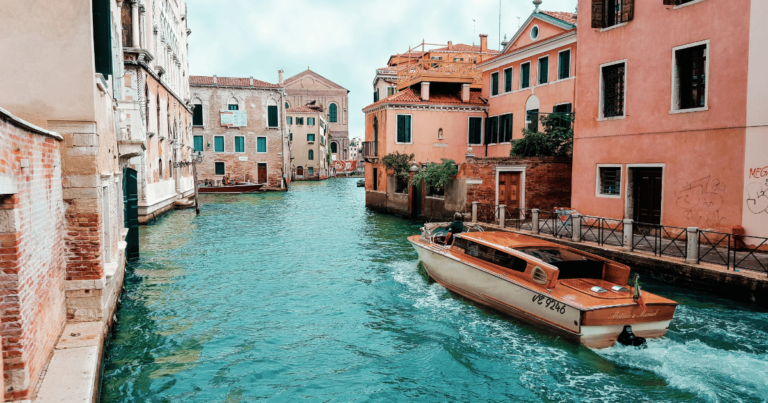Living in Italy is a dream for many. But what about the cost? The average cost of living in Italy depends on several factors, including location, lifestyle, and personal choices. In this article, we’ll go over the main expenses you’ll face, from housing to food, to give you a clear idea of the average living cost in Italy. Whether you’re planning to move, work, or study, knowing the average living cost in Italy can help you budget wisely.
Housing Costs
Housing is usually the biggest monthly expense in Italy. The cost varies a lot between cities. Here’s a quick overview:
- Big Cities: Rome, Milan, and Florence are among the most expensive. A one-bedroom apartment in the city center can cost around €800–€1,500 per month. Outside the center, it can be a bit cheaper, around €600–€1,000.
- Smaller Cities and Towns: In smaller towns, rent prices drop. You might find a one-bedroom apartment for €400–€700, even in some tourist areas.
- Student Accommodation: Many students prefer shared apartments, which can lower the cost. On average, shared student housing is around €300–€500 per person.
Utility Costs
In Italy, utilities add to your monthly expenses. For a small apartment, expect to pay around €100–€200 per month. This includes electricity, gas, heating, and water. Internet services are an extra €25–€35 per month. Utilities can vary depending on the season, especially with heating in winter.
Food and Groceries
Italy is famous for its food, and it’s possible to eat well on a budget. Grocery shopping can cost around €200–€400 monthly for one person. Here’s a breakdown:
- Basic Items: Milk costs around €1 per liter, bread is about €1.50 for a loaf, and pasta is often less than €1 per pack.
- Fruits and Vegetables: Local produce is affordable, but imported items may cost more.
- Eating Out: An average meal at a mid-range restaurant is around €15–€25 per person. Inexpensive pizzerias or cafes offer meals for as low as €5–€10.
Transportation
Public transportation is affordable in Italy. Here’s a look at the common transportation costs:
- Public Transport Pass: In cities like Rome and Milan, a monthly pass costs around €35–€55.
- Buses and Trains: Bus fares range from €1–€2 per ride. For regional trains, the price depends on the distance, but short journeys can be as low as €5–€10.
- Owning a Car: If you prefer driving, remember to add fuel costs (around €1.80 per liter), insurance, and maintenance. Parking in big cities is also limited and often expensive.
Healthcare Costs
Italy has a good healthcare system, and citizens and residents can access public health services. However, private healthcare and additional insurance costs are common:
- Public Healthcare: If you have legal residency, basic health services are free or very low-cost.
- Private Healthcare: Private doctor visits can range from €50–€100 per appointment. Health insurance for extra coverage can cost between €500–€1,000 annually.
Education Costs
If you’re moving with kids or planning to study, education costs vary based on the school or university:
- Public Schools: Public schools in Italy are free for residents, though some fees for books or activities apply.
- Private Schools: Fees for private schools can be expensive, ranging from €4,000–€10,000 per year.
- University Fees: Public university tuition can be around €1,000–€2,000 per year, though some programs might charge more for non-EU students.
Entertainment and Leisure
Italy offers plenty of entertainment options, from visiting historic sites to enjoying local festivals. Some common entertainment expenses include:
- Cinema: Tickets are around €8–€10 each.
- Gym Membership: Monthly memberships typically cost €30–€60.
- Travel: Exploring Italy is popular. Short domestic flights can cost as low as €30–€50 if booked early.
Average Monthly Budget for a Single Person
Let’s break down the average monthly living cost in Italy for one person:
- Housing: €600 (average, based on a medium-sized city)
- Utilities: €150
- Groceries: €300
- Transportation: €50 (public transport)
- Leisure and Other: €150
Total Monthly Cost: Around €1,250 for a modest lifestyle. In a bigger city, this can rise to €1,500–€1,800.
FAQs About Living Costs in Italy
1. Is Italy expensive to live in?
Italy’s cost of living can vary. Major cities like Milan and Rome are more expensive, while smaller cities and towns are more affordable. Generally, Italy is cheaper than many Western European countries.
2. What is the average rent in Italy?
In big cities, rent for a one-bedroom apartment ranges from €800–€1,500 in the city center. In smaller towns, rent might be between €400–€700.
3. How much do groceries cost per month in Italy?
On average, groceries cost around €200–€400 monthly per person. This can vary depending on your diet and shopping habits.
4. Is healthcare free in Italy?
Public healthcare is available to residents and is mostly free or low-cost. Private healthcare costs extra, and many people buy health insurance for additional coverage.
5. Do I need a car in Italy?
In big cities, public transport is affordable and reliable. Having a car is more convenient in rural areas but comes with extra costs like fuel, insurance, and parking.
6. Can I live in Italy on €1,000 a month?
It may be possible in smaller towns with a minimalist lifestyle, but €1,000 would be tight in big cities due to higher housing and living costs.
7. Is eating out in Italy expensive?
Eating out can be affordable if you choose casual places like pizzerias or cafes, with meals for €5–€10. Mid-range restaurants cost about €15–€25 per meal.
Italy offers a fantastic lifestyle for those who budget wisely. While the average living cost in Italy can vary, understanding these basics can help you plan for a comfortable life in this beautiful country.

